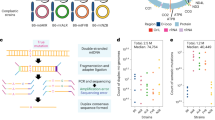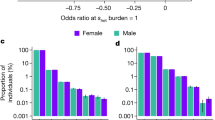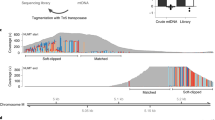Abstract
According to evolutionary theory, mitochondria could be poisoned gifts that mothers transmit to their sons. This is because mutations harmful to males are expected to accumulate in the mitochondrial genome, the so-called ‘mother’s curse’. However, the contribution of the mother’s curse to the mutation load in nature remains largely unknown and hard to predict, because compensatory mechanisms could impede the spread of deleterious mitochondria. Here we provide evidence for the mother’s curse in action over 290 years in a human population. We studied a mutation causing Leber’s hereditary optical neuropathy, a disease with male-biased prevalence and which has long been suspected to be maintained in populations by the mother’s curse. Male carriers showed a low fitness relative to non-carriers and to females, mostly explained by their high rate of infant mortality. Despite poor male fitness, selection analysis predicted a slight (albeit non-significant) increase in frequency, which sharply contrasts with the 35.5% per-generation decrease predicted if mitochondrial DNA transmission had been through males instead of females. Our results are therefore even suggestive of positive selection through the female line that may exacerbate effects of the mother’s curse. This study supports a contribution of the mother’s curse to the reduction of male lifespan, uncovering a large fitness effect associated with a single mitochondrial variant.
This is a preview of subscription content, access via your institution
Access options
Access Nature and 54 other Nature Portfolio journals
Get Nature+, our best-value online-access subscription
$29.99 / 30 days
cancel any time
Subscribe to this journal
Receive 12 digital issues and online access to articles
$119.00 per year
only $9.92 per issue
Buy this article
- Purchase on Springer Link
- Instant access to full article PDF
Prices may be subject to local taxes which are calculated during checkout



Similar content being viewed by others
References
White, D. J., Wolff, J. N., Pierson, M. & Gemmell, N. J. Revealing the hidden complexities of mtDNA inheritance. Mol. Ecol. 17, 4925–4942 (2008).
Frank, S. A. & Hurst, L. D. Mitochondria and male disease. Nature 383, 224 (1996).
Murlas Cosmides, L. & Tooby, J. Cytoplasmic inheritance and intragenomic conflict. J. Theor. Biol. 89, 83–129 (1981).
Wolff, J. N. & Gemmell, N. J. Mitochondria, maternal inheritance, and asymmetric fitness: why males die younger. BioEssays 35, 93–99 (2013).
Ruiz-Pesini, E. et al. Human mtDNA haplogroups associated with high or reduced spermatozoa motility. Am. J. Hum. Genet. 67, 682–696 (2000).
Holyoake, A. J. et al. High incidence of single nucleotide substitutions in the mitochondrial genome is associated with poor semen parameters in men. Int. J. Androl. 24, 175–182 (2001).
Gemmell, N. J., Metcalf, V. J. & Allendorf, F. W. Mother’s curse: the effect of mtDNA on individual fitness and population viability. Trends Ecol. Evol. 19, 238–244 (2004).
Hedrick, P. W. Reversing mother’s curse revisited. Evolution 66, 612–616 (2012).
Wade, M. J. & Brandvain, Y. Reversing mother’s curse: selection on male mitochondrial fitness effects. Evolution 63, 1084–1089 (2009).
Kuijper, B., Lane, N. & Pomiankowski, A. Can paternal leakage maintain sexually antagonistic polymorphism in the cytoplasm? J. Evol. Biol. 28, 468–480 (2015).
Beekman, M., Dowling, D. K. & Aanen, D. K. The costs of being male: are there sex-specific effects of uniparental mitochondrial inheritance? Phil. Trans R. Soc. B 369, 20130440 (2014).
Dordevic, M. et al. Sex-specific mitonuclear epistasis and the evolution of mitochondrial bioenergetics, ageing, and life history in seed beetles. Evolution 71, 274–288 (2017).
Wade, M. J. Paradox of mother’s curse and the maternally provisioned offspring microbiome. Cold Spring Harb. Perspect. Biol. 6, a017541 (2014).
Wade, M. J. & Drown, D. M. Nuclear–mitochondrial epistasis: a gene’s eye view of genomic conflict. Ecol. Evol. 6, 6460–6472 (2016).
Ross, J. M., Coppotelli, G., Hoffer, B. J. & Olson, L. Maternally transmitted mitochondrial DNA mutations can reduce lifespan. Sci. Rep. 4, 6569 (2014).
Latorre-Pellicer, A. et al. Mitochondrial and nuclear DNA matching shapes metabolism and healthy ageing. Nature 535, 561–565 (2016).
Camus, M. F., Clancy, D. J. & Dowling, D. K. Mitochondria, maternal inheritance, and male aging. Curr. Biol. 22, 1717–1721 (2012).
Smith, S., Turbill, C. & Suchentrunk, F. Introducing mother’s curse: low male fertility associated with an imported mtDNA haplotype in a captive colony of brown hares. Mol. Ecol. 19, 36–43 (2010).
Innocenti, P., Morrow, E. H. & Dowling, D. K. Experimental evidence supports a sex-specific selective sieve in mitochondrial genome evolution. Science 332, 845–848 (2011).
Maklakov, A. A. & Lummaa, V. Evolution of sex differences in lifespan and aging: causes and constraints. BioEssays 35, 717–724 (2013).
Wallace, D. C. A mitochondrial bioenergetic etiology of disease. J. Clin. Invest. 123, 1405–1412 (2013).
Reinhardt, K., Dowling, D. K. & Morrow, E. H. Mitochondrial replacement, evolution, and the clinic. Science 341, 1345–1346 (2013).
Tonska, K., Kodron, A. & Bartnik, E. Genotype–phenotype correlations in Leber hereditary optic neuropathy. Biochim. Biophys. Acta 1797, 1119–1123 (2010).
Piotrowska, A., Korwin, M., Bartnik, E. & Tonska, K. Leber hereditary optic neuropathy: historical report in comparison with the current knowledge. Gene 555, 41–49 (2015).
Macmillan, C. et al. Pedigree analysis of French Canadian families with T14484C Leber’s hereditary optic neuropathy. Neurology 50, 417–422 (1998).
Man, P. Y. W., Turnbull, D. M. & Chinnery, P. F. Leber hereditary optic neuropathy. J. Med. Genet. 39, 162–169 (2002).
Mackey, D. A. Three subgroups of patients from the United Kingdom with Leber hereditary optic neuropathy. Eye 8, 431–436 (1994).
Barboni, P. et al. Leber’s hereditary optic neuropathy with childhood onset. Invest. Ophth. Vis. Sci. 47, 5303–5309 (2006).
Chinnery, P. F. et al. The challenges of mitochondrial replacement. PLoS Genet. 10, e1004315 (2014).
Landry, Y. Les Filles du Roi au XVIIe Siècle: Orphelines en France, Pionnières au Canada [The Filles du Roi in the 17th Century: Orphans in France, Pionneers in Canada] (Leméac, 1992).
Laberge, A.-M. et al. A “Fille du Roy” introduced the T14484C Leber hereditary optic neuropathy mutation in French Canadians. Am. J. Hum. Genet. 77, 313–317 (2005).
Desjardins, B. Le Registre de la population du Québec ancien [The Early Québec Population Register]. Ann. Démogr. Hist. (Paris) 2, 215–226 (1998).
Moorad, J. A. Individual fitness and phenotypic selection in age-structured populations with constant growth rates. Ecology 95, 1087–1095 (2014).
Landry, Y., Gadoury, L. & Charbonneau, H. Démographie différentielle en Nouvelle-France : villes et campagnes [Differential demography in New France: cities and countryside]. Rev. Hist. Am. Fr. 38, 357–378 (1985).
Amorevieta-Gentil, M. Les Niveaux et les Facteurs Déterminants de la Mortalité Infantile en Nouvelle-France et au Début du Régime Anglais. [Levels and determinants of infant mortality in New France and at the onset of the English Regime.] PhD thesis, Université de Montréal, (2010).
Gagnon, A. & Mazan, R. Does exposure to infectious diseases in infancy affect old-age mortality? Evidence from a pre-industrial population. Soc. Sci. Med. 68, 1609–1616 (2009).
Davenport, R., Schwarz, L. & Boulton, J. The decline of adult smallpox in eighteenth-century London. Econ. Hist. Rev. 64, 1289–1314 (2011).
Unckless, R. L. & Herren, J. K. Population genetics of sexually antagonistic mitochondrial mutants under inbreeding. J. Theor. Biol. 260, 132–136 (2009).
Bower, S. P., Hawley, I. & Mackey, D. A. Cardiac arrhythmia and Leber’s hereditary optic neuropathy. Lancet 339, 1427–1428 (1992).
La Russa, A. et al. Leber’s hereditary optic neuropathy associated with a multiple-sclerosis-like picture in a man. Mult. Scler. J. 17, 763–766 (2011).
Gropman, A. et al. Variable clinical manifestation of homoplasmic G14459A mitochondrial DNA mutation. Am. J. Med. Genet. 124A, 377–382 (2004).
Nikoskelainen, E. K. et al. Leber’s “plus”: neurological abnormalities in patients with Leber’s hereditary optic neuropathy. J. Neurol. Neurosurg. Psychiatry 59, 160–164 (1995).
Wallace, D. C. A new manifestation of Leber’s disease and a new explanation for the agency responsible for its unusual pattern of inheritance. Brain 93, 121–132 (1970).
Fruhman, G. et al. Atypical presentation of Leigh syndrome associated with a Leber hereditary optic neuropathy primary mitochondrial DNA mutation. Mol. Genet. Metab. 103, 153–160 (2011).
Chinnery, P. F., Andrews, R. M., Turnbull, D. M. & Howell, N. Leber hereditary optic neuropathy: does heteroplasmy influence the inheritance and expression of the G11778A mitochondrial DNA mutation? Am. J. Med. Genet. 98, 235–243 (2001).
Yen, M.-Y., Wang, A.-G. & Wei, Y.-H. Leber’s hereditary optic neuropathy: a multifactorial disease. Prog. Retin. Eye Res. 25, 381–396 (2006).
Man, P. Y. W. et al. Mitochondrial DNA haplogroup distribution within Leber hereditary optic neuropathy pedigrees. J. Med. Genet. 41, e41 (2004).
Hamzelou, J. World’s first baby born with new “3 parent” technique, https://www.newscientist.com/article/2107219-exclusive-worlds-first-baby-born-with-new-3-parent-technique (2016).
Moorad, J. A. A demographic transition altered the strength of selection for fitness and age-specific survival and fertility in a 19th century American population. Evolution 67, 1622–1634 (2013).
Heyer, E. et al. Phylogenetic and familial estimates of mitochondrial substitution rates: study of control region mutations in deep-rooting pedigrees. Am. J. Hum. Genet. 69, 1113–1126 (2001).
Moreau, C. et al. When genetics and genealogies tell different stories—maternal lineages in Gaspesia. Ann. Hum. Genet. 75, 247–254 (2011).
Acknowledgements
We thank S. Gravel, L. Barreiro, A. Hodgkinson, J. Moorad, D. H. Nussey and D. Réale for their useful comments that helped improve the manuscript; H. Vézina, M. Jomphe and B. Desjardins for their support in working with the BALSAC register and the RPQA. This study was funded by the Fonds de recherche du Québec—Santé, through the Québec Network of Applied Genetic Medicine (D.L.) and a Natural Sciences and Engineering Research Council of Canada Discovery grant (E.M.).
Author information
Authors and Affiliations
Contributions
D.L., E.M. and C.M. designed the study, C.M. performed the analyses, E.M. wrote the paper; B.B., A.A.C. and A.G. brought their expertise, respectively, in genetic medicine, evolution and ageing, and demography; all authors discussed the results and commented on the manuscript.
Corresponding author
Ethics declarations
Competing financial interests
The authors declare no competing financial interests.
Additional information
Publisher’s note: Springer Nature remains neutral with regard to jurisdictional claims in published maps and institutional affiliations.
Electronic supplementary material
Supplementary Information
Supplementary Tables, Supplementary Figures, Supplementary Text and Supplementary References
Rights and permissions
About this article
Cite this article
Milot, E., Moreau, C., Gagnon, A. et al. Mother’s curse neutralizes natural selection against a human genetic disease over three centuries. Nat Ecol Evol 1, 1400–1406 (2017). https://doi.org/10.1038/s41559-017-0276-6
Received:
Accepted:
Published:
Issue Date:
DOI: https://doi.org/10.1038/s41559-017-0276-6
This article is cited by
-
The role of genetics and epigenetics in sex differences in human survival
Genus (2023)
-
Association of mitochondrial DNA content, heteroplasmies and inter-generational transmission with autism
Nature Communications (2022)
-
Inheritance through the cytoplasm
Heredity (2022)
-
Extreme heterogeneity of human mitochondrial DNA from organelles to populations
Nature Reviews Genetics (2021)
-
Sex gap in aging and longevity: can sex chromosomes play a role?
Biology of Sex Differences (2018)



